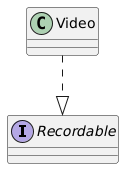UML Diagrams MCQs Questions With Answers – Part 28
Test your knowledge and boost your confidence with these multiple-choice quizzes focused on UML diagrams, foundational software engineering concepts, and real-world best practices. Designed for students, developers, and exam candidates, these MCQs offer a quick and effective way to assess your understanding and sharpen your skills.
1. What does a connector link in a UML composite structure diagram?
A Two inherited classes
B Two packages
C Two ports or internal parts of the same component
D Two lifelines in a sequence
2. In typed UML profiles (like UML for JEE), what does the stereotype <<entity>> refer to?
A A basic abstract class
B A user interface
C A persistent business class
D A DAO implementation class
3. What does the arrow Book –> Author mean?

A Author can access Book
B Book has a navigable access to Author
C Book inherits from Author
D It’s a composition from Book to Author
4. What does “number” represent here?

A A method parameter
B A temporary attribute
C A visibility constraint
D A qualification key allowing access to an Account via its number
5. What is the characteristic of an internal transition in a UML state?
A It changes the state of the object
B It triggers no behavior
C It is invisible to the user
D It does not cause exit or entry into the current state
6. Which statement is true regarding an interface in UML?
A It can contain state attributes
B It can be instantiated directly
C It can be inherited by another interface
D It cannot be associated with a class
7. What does the ..|> relationship mean?

A Video inherits from an abstract class
B Video is a subclass of Recordable
C Video implements the Recordable interface
D Recordable instantiates Video
8. In a UML activity diagram, how is the passing of an object from one activity to another represented?
A By an object node linked to actions
B By a floating text annotation
C By a diamond between two arrows
D By a line with a box named object
9. The multiplicity 0..* means that ___________
A The element is mandatory and unique
B There are between 1 and 5 elements
C Zero or any number of elements
D Exactly one element
10. You are designing a fitness app. A training program is composed of multiple sessions, which do not exist on their own. What UML relationship?
A Dependency
B Composition
C Association
D Aggregation





